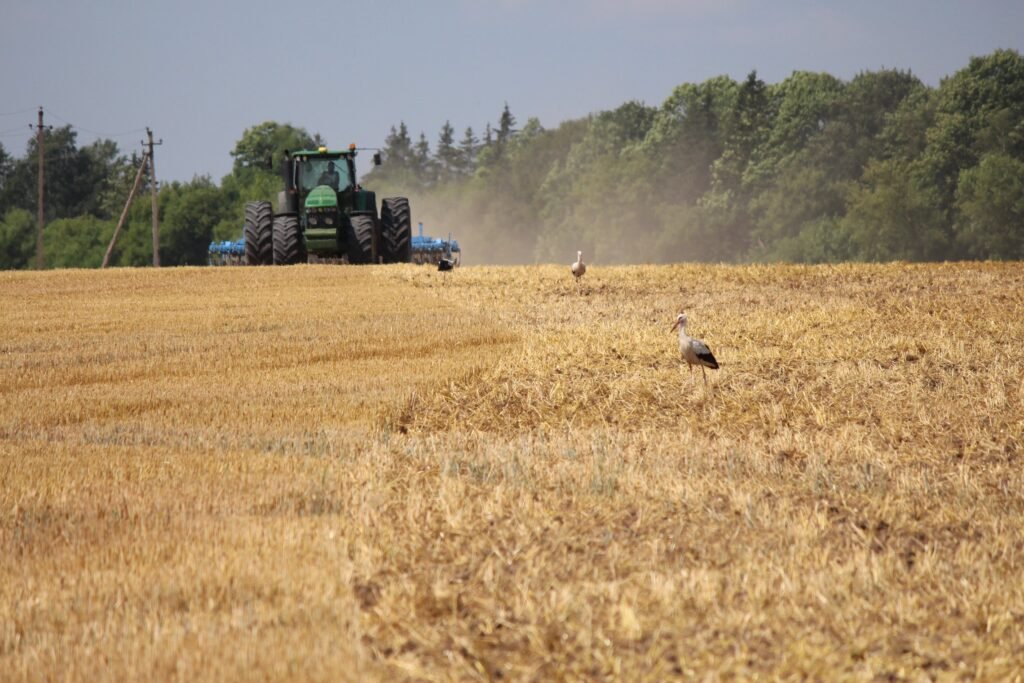The Ministry of Agriculture has prepared draft amendments to the requirements for agricultural land under good agricultural and environmental conditions (GAEC) and the rules for direct payment administration.
“We have incorporated the changes outlined in Lithuania’s 2023–2027 Strategic Plan for Agriculture and Rural Development – simplifying requirements for farmers concerning drainage ditch buffer zones and crop rotation,” said Agriculture Minister Ignas Hofmanas.
Drivers of Change
The proposed changes were motivated by suggestions from farmers, associations, municipalities, and updates to agricultural and rural development regulations.The third amendment to the Strategic Plan, which includes these changes, is currently under review by the European Commission (EC). A decision is expected by late January or early February.The draft rules on GAEC requirements and the administration of applications and direct payments for agricultural land, other areas, and livestock will only be publicly announced once the EC approves the third amendment to the Strategic Plan.
Relaxed GAEC Requirements
The nine mandatory GAEC requirements for farmers are a key condition for support in the Strategic Plan. If approved by the EC, the following changes are anticipated:
Buffer Zones Near Drainage Ditches (GAEC 4 Standard)
Starting in 2025, buffer zones would only be required for drainage ditches that are at least 3 km in length, have a basin area of 5 km², or maintain water flow for at least six months annually. This change would apply to most drainage ditches within agricultural lands, significantly reducing restrictions for farming near these ditches.
Shortened Vegetation Retention Periods (GAEC 5 & GAEC 6 Standards)
The minimum period for maintaining grass vegetation or residues would be shortened from November 15–March 15 to November 15–March 1.
Crop Rotation Requirements (GAEC 7 Standard)
The mandatory percentage of arable land requiring annual crop rotation would be reduced from 65% to 35%. Farmers could also meet rotation requirements by growing secondary crops (undersown, intercrops, winter cover crops) or cultivating the same crop in the same location for up to three years instead of two.
Non-Productive Land Allocation (GAEC 8 Standard)
From 2025, the requirement to allocate 4% of arable land to non-productive areas would be eliminated. Only the maintenance of protected landscape elements and restrictions on cutting hedges and trees during the bird breeding season would remain.
Changes to TI Rules
With the elimination of the Efficiency and Effectiveness Methodology, farmers participating in the “Activities on Arable Land” ecological scheme will no longer be required to allocate arable land for non-productive purposes. However, those declaring over 100 ha of arable land and participating in the “Certified Seed Usage” activity must also choose one of the following: “Crop Rotation,” “Intercrops,” “No-Till Sustainable Farming Practices,” “Landscape Element Maintenance,” “Short-Lived Woody Plant Strips,” or “Perennial Grass Strips.”
Additional changes include: Updating the list of crops that can be grown on the same field for up to four years under the “Crop Rotation” activity. Aligning the winter maintenance dates for intercrops with GAEC 6, changing the deadline from March 15 to March. Allowing rolling or chopping of undersown crops during the retention period without damaging soil cover.
Broader Adjustments
From 2025, updated commitments include:
- Modifying the minimum eligible support area for various ecological systems.
- Introducing compatibility across multiple ecological schemes, enabling farmers to participate in several programs using the same livestock or land.
Simplifications are also planned for record-keeping, with required documentation for ecological systems to be completed electronically or in simplified formats.
Summary
The proposed changes aim to reduce administrative burdens, support sustainable farming, and offer more practical compliance options. Lithuania’s agricultural sector stands to benefit from these simplified and farmer-friendly regulations, fostering both environmental sustainability and productive farming practices.
Lietuvosvalstybe.com
Sources: Ministry of Health of the Republic of Lithuania
When quoting or distributing information from lietuvosvalstybe.com, it is necessary to provide a reference to the source of the information.
Lietuvosvalstybe.com
Sources: Ministry of Agriculture of the Republic of Lithuania
When quoting or distributing information from lietuvosvalstybe.com, it is necessary to provide a reference to the source of the information.


